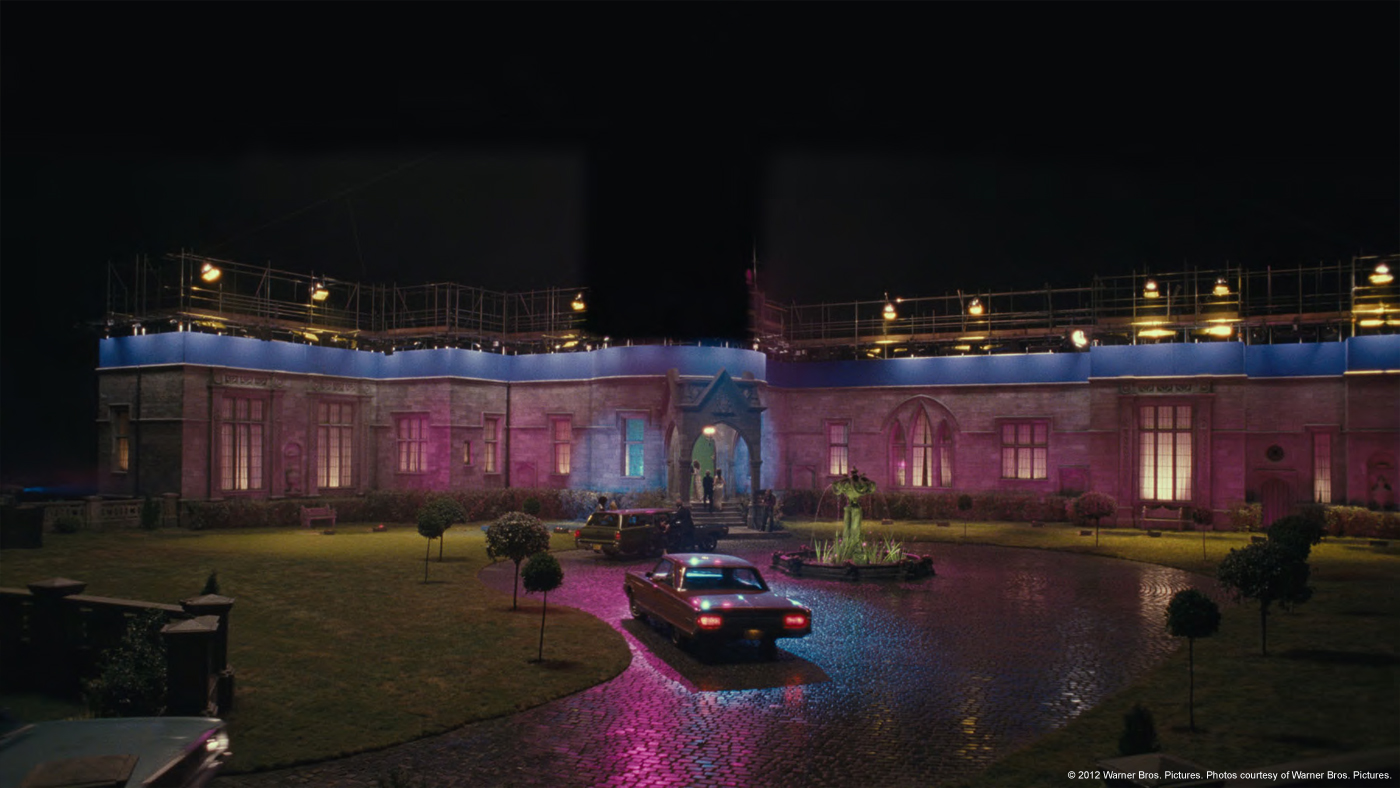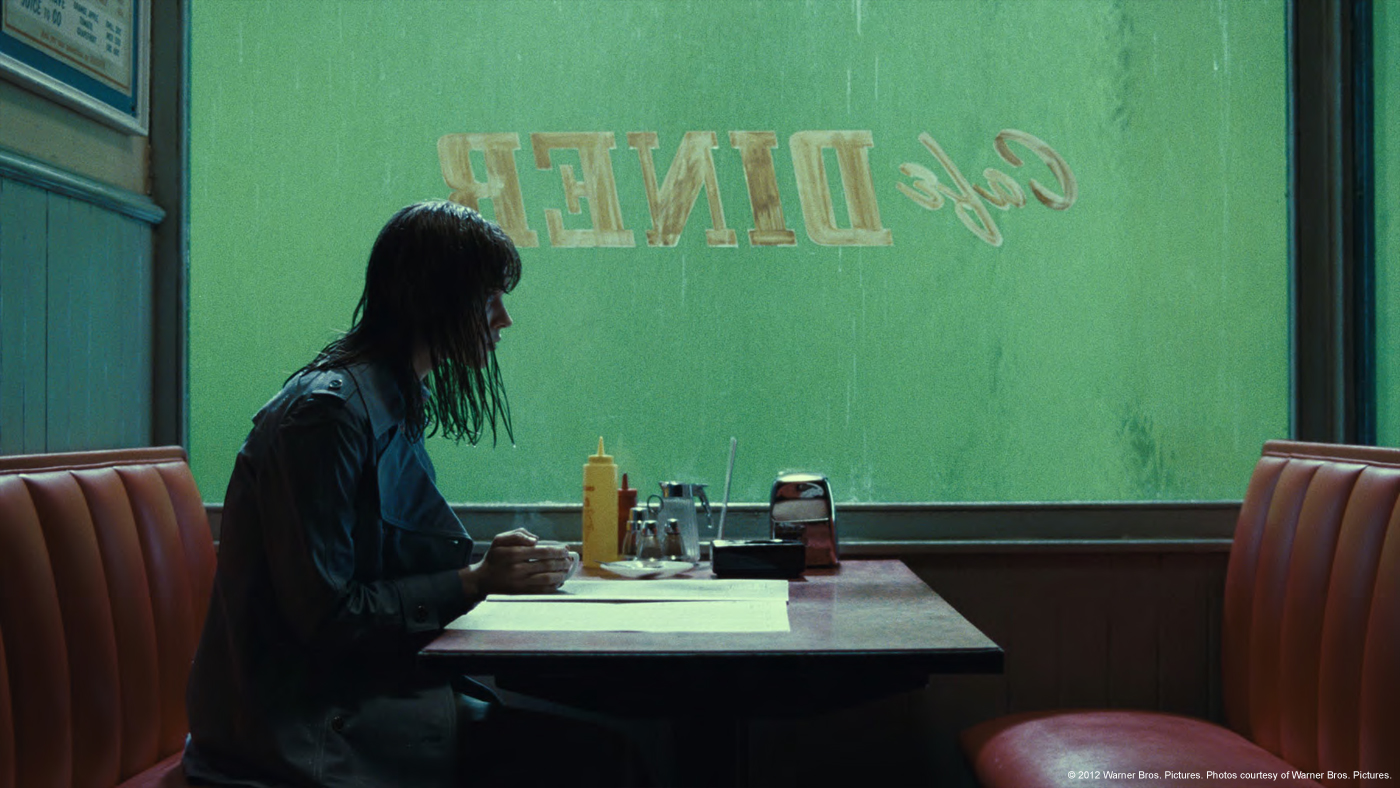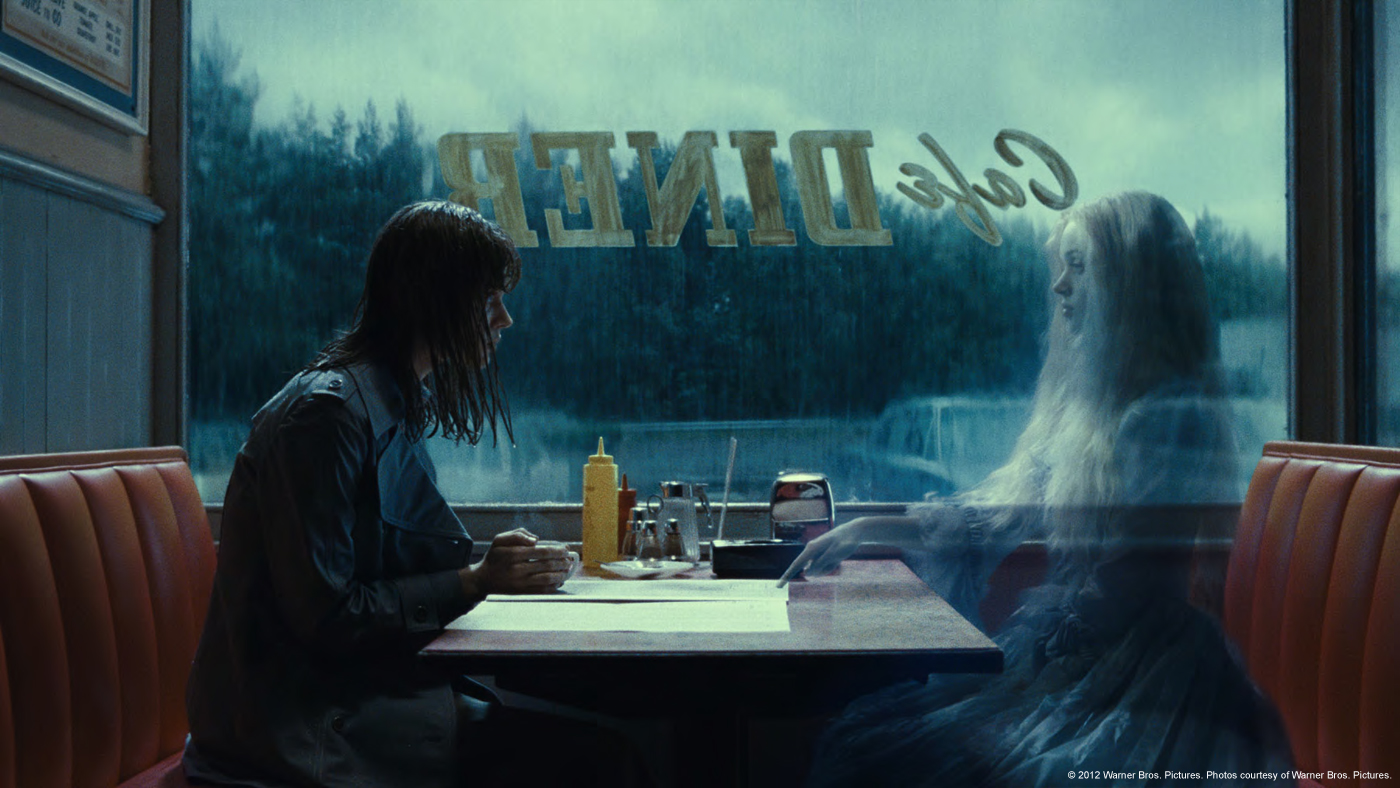Anton Yri began working in the VFX on BATMAN BEGINS at The Senate VFX in 2005. It has since remained in the studio and has participated in numerous films like THE DA VINCI CODE, HELLBOY II: THE GOLDEN ARMY or KICK ASS and also on TV shows like ROME, FLASH FORWARD or LUTHER.
What is your background?
I’m originally from New Zealand, but now live and work in London. I began my journey into the world of vfx by completing a compositing course at Escape Studios. From there I got my first position at The Senate in 2005 working as a roto artist on BATMAN BEGINS, and have been with them ever since!
How did The Senate get involved on this show?
We were lucky enough to be involved with DARK SHADOWS from an early stage as we had worked with Angus Bickerton on a number of films previously. From reading the script there were a number of shots that were identified early on that would require significant vfx work. Angus asked us to do some concepts and pre-vis that would help during filming of these shots. He would show these to Tim Burton to get his feedback on the ideas. Pleasantly, a number of these early concepts made it into the film.
How was the collaboration with director Tim Burton?
It was slightly daunting working on a Tim Burton film, as I grew up watching and enjoying his films. He is a fantastic director with a unique and identifiable style of filmmaking and he will certainly not settle for anything that does not match his vision. On a day-to-day basis we primarily discussed our work with Angus, who would carefully digest and pass on necessary notes from reviews with Tim.
What was his approach about visual effects?
He didn’t want the effects in the film to encroach too heavily on the story, so he veered away from anything too elaborate. There was a decision made to mostly rely on practical sets and miniatures for the environment side of things. But he certainly isn’t afraid to use visual effects as long as they enhance the story he is trying to tell.
How did you collaborate with Production VFX Supervisor Angus Bickerton?
We have worked with Angus on a number of his films, THE DA VINCI CODE, ANGELS & DEMONS and THE CHRONICLES OF NARNIA: THE VOYAGE OF THE DAWN TREADER to name but a few. It is always a great experience working with Angus, as he is exceptionally knowledgeable and passionate about film and visual effects. We worked closely during filming on a number of elements shoots, primarily providing camera data, measurements and angles for filming actors in front of green screen that we could composite into the Collinwood Manor under-construction shots as well as Angel Bay Cannery. We also provided tracked cameras and data as well as attending the one-third scale Collinwood Manor shoot.
Can you tell us more about the impressive shot showing the Collinwood Manor under-construction?
From the word go this was always going to be our most complicated shot. The idea behind the shot was to show the relationship and distance between the town of Collinsport and Collinwood Manor and also showing the Collins family watching the construction of their vast new home. Angus gave us some initial guidelines as to what Tim wanted to achieve with the shot. We set up a camera in Maya with some basic geometry of the manor and surrounds and rendered some basic pre-vis ideas to get an idea of how long the shot would need to be and what the camera would need to do. It was imperative that even though this was to be a fully constructed shot that the camera move would need to be based in reality, so as not to jar with the rest of the film. So in the end we attached the 3D camera to a virtual 20 ft techno-crane and put it up in the roof of the manor.
Using a Lidar scan of the Collinwood Manor miniature, the 3D team had an accurate model of the front half of the house. From this they had to literally tear off the walls and roof and build an internal structure of the house based on research done into 18th Century building techniques. With such a vast expanse, hundreds of wooden beams needed to be added in order to give the manor sufficient scale and structure as well as many other items you would find on a building site of that magnitude, such as buckets, ropes, tool boxes, tools etc. CG period scaffolding was then added to the exterior. An animating CG crane was also added to the foreground to add more dynamism to the shot. To add life to the scene, 18th Century construction worker elements shot on green-screen were added around the various walkways and scaffolding.
How did you create the huge environment around the Manor?
We were provided with a 3D model of the Collinsport area by the Art Department and used this for our layout. Once we had the pre-vis signed off, we started creating the distant view of Collinsport using matte paintings and sea plates which were used as projections. As the manor was surrounded by pine forest, close and mid ground trees were fully CG and rendered as instances. Angus provided us with a large library of hi-res stills and plates that we could use for skies. Additional haze and atmosphere was added using filmed elements and distant CG seagulls wire liberally scattered about.
Can you tell us more about the sequence in which Barnabas is released from his coffin and attacks some workers?
This is a fast-paced action sequence whereby a construction crew discovered a buried coffin whilst building a McDonalds Restaurant. We were tasked with building a CG 1970’s style McDonalds restaurant, as well as the huge glowing McDonalds sign, a lot of wire-removals, blood spurts, animating CG coffin lid and chains that Barnabas bursts out from, as well as various other compositing work.
Angelique owns a big Fish canning factory. How did you extend the live action elements?
The original set consisted of a small section of the factory, with a single conveyor belt, surrounded by 25 or so workers. The factory needed to be extended back, to create a vast, bustling production house. Using the set as reference, the main walls of the building were extended back to increase the size of the factory by around 300%. The extra space was then filled with three more conveyor belts, again constructed and animated in CG, and dotted with another 60 or so worker elements – all placed on 3D cards to maintain realistic perspective and parallax. Other areas of the cannery were augmented with additional fish can conveyors, steamers and steam elements. The exterior was also replaced using a live action element of the Pinewood harbour set.
There is a moment that is a Happening at the Collinwood Manor. Can you tell us more about your work on this sequence?
The main shot we did on this sequence was a wide establishing shot of the manor as the numerous guests pull up in their cars and venture into the party within. This started out as a fairly straight-forward miniature composite, but Tim felt that there should be a lot more people and cars that were shot on the main live-action plate. Angus shot a number of extra kit-set model cars that he had positioned and lit to fit in the scene. These worked very well and saved us having the build these in CG. We also needed to add a number of extra people walking into and milling around the front of the manor. We didn’t have any specific elements so we had to make do with some green-screen elements shot for a different scene. Thankfully Angus also got some of the vfx production staff to dress in some hip 70’s garb and provided those as elements as well.
Can you tell us more about the shots on the Manor’s balcony and the coastline environment?
The balcony scenes were shot on a sound stage in front of green-screen, so we needed to create the entire distant coastline environment as well as the tops of pine trees to add some depth between the balcony and the horizon. Our lead matte painter Doug Winder pieced together a large panoramic view using dozens of high-res stills provided by the production that we could use for all views off the balcony. We used a tiled sea plates and added glinting highlights from the town in the distance which added some lovely shimmering circles of confusion throughout the sequence.
The movie features some ghosts. Can you tell us more about the design process for the ghost aspect?
As stated earlier Tim wanted to avoid anything too magical, and the ghost of Josette appears numerous times throughout the film. So her general look was constructed in 2D. She needed to be subtly transparent, and also appear ethereal with out going over the top. In the end we used heavily manipulated flame elements to drive a distortion and movement around her edges as well as cause a disturbance on the environment behind her. We were also provided with ‘reflection’ passes, as she floats down the hall she casts a bright reflection on the wall to help sit her into the environment. This required getting accurate 3D tracks of the main plate, as well as the various reflection passes and effective 3D stabilizing these passes before compositing them back onto the main plate. This was all achieved using Nukes various tools.
Can you tell us more about the CG crab that crawls on Josette body?
Tim Burton wanted to push up the weirdness factor on Josette, so when she first appears she has more of an impact. So it was decided that as Victoria unveils her by pulling off a bed-sheet, she has a cluster of crabs sheltering on her skin. These all skitter away as the sheet is pulled away. In the following shot, as she begins to speak, another single crab emerges from her mouth. The crabs were modeled and textured in Mudbox, then animated in Maya. We used matchmaking software to track the camera, and also matched her movement using a cyberscan of the actress. Blend shapes in Maya were used to simulate her speaking when it comes out of her mouth. These were really tricky shots to get right, and they came to us quite late in the schedule so I was really pleased with how well they turned out. A lot of credit has to be paid to our CG Supervisor, Marty Waters who put in a lot of work to get them right.
Can you tell us more about the cracking effect on Angelique?
The premise is that Angelique has a porcelain-like outer shell, which cracks when she becomes angry or damaged. As she spies Barnabas kissing Victoria on the balcony, she seethes with jealousy and cracks for the first time in the film, from the top of her head down to her chest. To achieve this effect, Angelique’s body was matchmoved in 3D using a cyberscan of Eva Green, with a matte painted crack then projected onto the geometry and revealed piece by piece, to give the appearance of a fault line travelling down her body. We did rely heavily on Mocha for some sections to get the tracking spot on, especially in the softer areas of her skin.
Can you tell us in detail the burning Collinwood Manor?
For the Collinwood Manor Burns sequence, the model house was set alight and filmed at high speed, to help give the flames a greater sense of scale. These model elements were then blended with the life-size foreground of the manor, and supplemented with additional flame elements where necessary. Foreground smoke elements and an overall fogging to the shot helped create the illusion of a raging inferno.
What was the biggest challenge on this project and how did you achieve it?
There we so many different challenges it is difficult to pick one.
Was there a shot or a sequence that prevented you from sleep?
I don’t recall getting a lot of sleep for the duration of the project, so I guess all of them!
What do you keep from this experience?
I personally learned far more working on this film than I anticipated, especially in regards to filming and working with miniatures. It was also a fantastic experience seeing and working around the astonishing sets that were constructed for this film. Lastly, working with such a great team here at The Senate, everyone worked extremely hard and produced a lot of work that we are really proud of.
How long have you worked on this film?
I have been involved for about 15 months, though really only full time for the last 8 months.
How many shots have you done?
Approximately 185.
What was the size of your team?
About 30.
What is your next project?
TOTAL RECALL.
What are the four movies that gave you the passion for cinema?
THE LORD OF THE RINGS TRILOGY
STAR WARS
INDIANA JONES
SPINAL TAP
A big thanks for your time.
// WANT TO KNOW MORE?
– The Senate VFX: Dedicated page about DARK SHADOWS on The Senate VFX website.
© Vincent Frei – The Art of VFX – 2012














